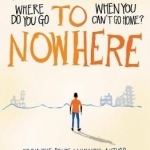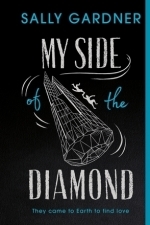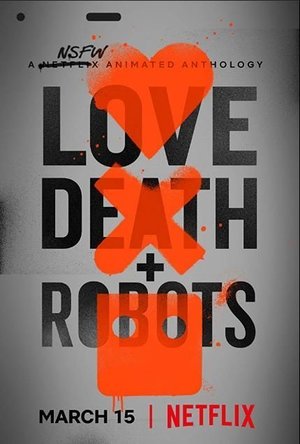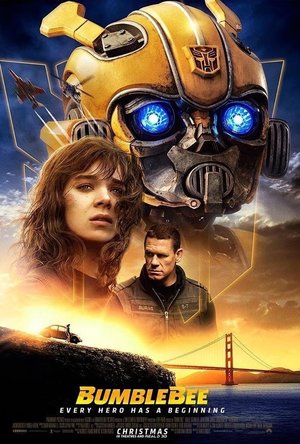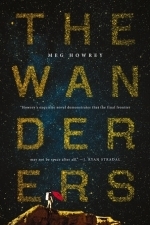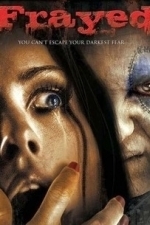Search
Search results

Real Boxing 2 ROCKY
Games and Entertainment
App
"The boxing game we deserve." 8/10 – Gamezebo "A big, brash boxing game that's surprising tactical...

Hex Mechs Free
Games and Entertainment
App
In the year 2523, a large wormhole opened up on the outer limits of Jupiter's orbit. E-CON's Navy...

Pocket Sergeant - UK Police Guide
Reference and Productivity
App
The award-winning app for police officers, police staff, detention officers, PCSOs, law students,...
Hazel (1853 KP) rated Welcome to Nowhere in Books
May 24, 2017
Contemporary War
This ARC was provided by the publisher via NetGalley in exchange for an honest review
The eximious children’s author, Elizabeth Laird, is continuing with her magnificent streak of prize-worthy novels. Her soon to be published book Welcome to Nowhere will be eagerly consumed by fans and new-readers alike. With a contemporary setting and shocking truths, young readers will become more aware of the events happening near and far.
Omar is only twelve, yet has a life style that will seem alien to the majority of readers. Living in Syria, Omar works to earn a wage as well as attends school, whilst also helping to care for his Cerebral-Palsy-suffering brother and three other siblings. Although Omar’s life is not easy, it is preferable to the events he is soon about to witness.
In March 2011, Syria broke out in civil war after the daring behaviour of a couple of schoolboys. After these vandals scrawled the phrase “the people want the regime to change” onto a wall, the government decided to fight back. With shootings regularly occurring in the streets, and bombs falling on houses, Omar and his family flee their city home to live with family in the countryside. However, they cannot stay there for long before danger finds them again. Running from the enemy, Omar and family find themselves on the streets with thousands of other refugees. But, where can they go when they have nowhere to call home?
Although Welcome to Nowhere is set before the development of the extreme Muslim group, ISIS, Elizabeth Laird provides an accurate description of the lives of Syrians and refugees at this present moment. Most young readers, and possibly many adults, may not understand what caused the current refugee crisis and may even regard them as the enemy. This book will open hearts and minds after revealing the terror and destruction thousands of people have faced, their experience of refugee camps and their desperation to be able to live in safety.
As well as revealing truths about the situation in the Middle East, Welcome to Nowhere educates the reader on the customs and beliefs of average Muslim families. Although slightly antiquated – men dominate over women – they are not all that different to the Western world. Omar wants to become a successful businessman, whilst his sister is desperate to go to school and university. Laird also writes of scenarios that are not unique to Syrian citizens, in particular medical conditions such as Cerebral Palsy and the way these people are attacked by social stigmas.
Whilst not labeling this book as ‘exciting’, Welcome to Nowhere is a story that will engage the readers’ attention. As a book with both entertainment and educational value, Elizabeth Laird’s latest book is worthy of significant praise. It is not often that a writer will dare to reveal the gritty truth about the current situation in the world, and thus Laird must be commended for persevering with such a difficult, challenging story. Although targeted at young adults (ages 12+), older readers will also enjoy and learn from this exceptional novel.
The eximious children’s author, Elizabeth Laird, is continuing with her magnificent streak of prize-worthy novels. Her soon to be published book Welcome to Nowhere will be eagerly consumed by fans and new-readers alike. With a contemporary setting and shocking truths, young readers will become more aware of the events happening near and far.
Omar is only twelve, yet has a life style that will seem alien to the majority of readers. Living in Syria, Omar works to earn a wage as well as attends school, whilst also helping to care for his Cerebral-Palsy-suffering brother and three other siblings. Although Omar’s life is not easy, it is preferable to the events he is soon about to witness.
In March 2011, Syria broke out in civil war after the daring behaviour of a couple of schoolboys. After these vandals scrawled the phrase “the people want the regime to change” onto a wall, the government decided to fight back. With shootings regularly occurring in the streets, and bombs falling on houses, Omar and his family flee their city home to live with family in the countryside. However, they cannot stay there for long before danger finds them again. Running from the enemy, Omar and family find themselves on the streets with thousands of other refugees. But, where can they go when they have nowhere to call home?
Although Welcome to Nowhere is set before the development of the extreme Muslim group, ISIS, Elizabeth Laird provides an accurate description of the lives of Syrians and refugees at this present moment. Most young readers, and possibly many adults, may not understand what caused the current refugee crisis and may even regard them as the enemy. This book will open hearts and minds after revealing the terror and destruction thousands of people have faced, their experience of refugee camps and their desperation to be able to live in safety.
As well as revealing truths about the situation in the Middle East, Welcome to Nowhere educates the reader on the customs and beliefs of average Muslim families. Although slightly antiquated – men dominate over women – they are not all that different to the Western world. Omar wants to become a successful businessman, whilst his sister is desperate to go to school and university. Laird also writes of scenarios that are not unique to Syrian citizens, in particular medical conditions such as Cerebral Palsy and the way these people are attacked by social stigmas.
Whilst not labeling this book as ‘exciting’, Welcome to Nowhere is a story that will engage the readers’ attention. As a book with both entertainment and educational value, Elizabeth Laird’s latest book is worthy of significant praise. It is not often that a writer will dare to reveal the gritty truth about the current situation in the world, and thus Laird must be commended for persevering with such a difficult, challenging story. Although targeted at young adults (ages 12+), older readers will also enjoy and learn from this exceptional novel.
Hazel (1853 KP) rated My Side of the Diamond in Books
Sep 16, 2017
Impassive
This ARC was provided by the publisher via NetGalley in exchange for an honest review
My Side of the Diamond is the latest novel by British author Sally Gardner. Employing the use of science fiction, Gardner explores the concept of love in a unique tale of a covered up alien invasion. The main characters are unfortunately caught up in the drama; however, no one will ever believe their story.
Jazmin Little’s best friend, Becky, has disappeared. Some say she was murdered, others claim she committed suicide, but what everyone agrees on is that she jumped from the top of the Shard in London, but never landed. Jazmin knows what happened but the authorities have torn her witness statement to shreds. Now everyone believes that she is the cause of Becky’s disappearance.
The reader plays an active role as the mysterious Mr. Jones who is interviewing a handful of characters involved with the mystery surrounding Becky’s fate. Jazmin and the others tell the reader, as Mr. Jones, the truth about the lead-up to the moment their lives changed forever. Jazmin explains the events that preceded Becky becoming infatuated with the enigmatic Icarus. From their first meeting, bizarre and frightening things began to occur. From Becky’s sudden recovery from anorexia as though she had just had an epiphany, to being chased by an impossible monster, the friends and their relatives are suddenly in serious danger.
Icarus claims to be an alien who has come to Earth to learn about love. Becky instantly believed him, however, Jazmin and the others remained sceptical. As they open up to Mr. Jones, they wish they could go back in time and change the way things panned out. In hindsight, they know who was good and who was bad, but at the time, it was impossible to know whom to trust.
Although the main story focuses on the relationship between Becky and Icarus and their resulting disappearance, Gardner also explores themes of social classes and friendship. Jazmin and Becky were polar opposite: Becky came from a family made of money, whereas Jazmin was lucky to have a can of baked beans for dinner. Despite this, they were best friends who did not let their backgrounds interfere with their relationship. The significance of their social class comes to light as Jazmin explains what happened at the trial after Becky’s disappearance. Being from such a low caste, it was easy for everyone to pin the blame on Jazmin.
The concept behind My Side of the Diamond is interesting, as is the method of narrating the story, however, it lacks any emotional connection. Mr. Jones, although having no dialogue of his own, comes across as an impassive character, and that is how I felt whilst reading the book. None of the characters were particularly relatable and it was difficult to care about what happened to them. Their circumstances were creepy, but also far-fetched and hard to comprehend.
Although Sally Gardner’s ideas are good, My Side of the Diamond is a disappointment, especially coming from a prize-winning author
My Side of the Diamond is the latest novel by British author Sally Gardner. Employing the use of science fiction, Gardner explores the concept of love in a unique tale of a covered up alien invasion. The main characters are unfortunately caught up in the drama; however, no one will ever believe their story.
Jazmin Little’s best friend, Becky, has disappeared. Some say she was murdered, others claim she committed suicide, but what everyone agrees on is that she jumped from the top of the Shard in London, but never landed. Jazmin knows what happened but the authorities have torn her witness statement to shreds. Now everyone believes that she is the cause of Becky’s disappearance.
The reader plays an active role as the mysterious Mr. Jones who is interviewing a handful of characters involved with the mystery surrounding Becky’s fate. Jazmin and the others tell the reader, as Mr. Jones, the truth about the lead-up to the moment their lives changed forever. Jazmin explains the events that preceded Becky becoming infatuated with the enigmatic Icarus. From their first meeting, bizarre and frightening things began to occur. From Becky’s sudden recovery from anorexia as though she had just had an epiphany, to being chased by an impossible monster, the friends and their relatives are suddenly in serious danger.
Icarus claims to be an alien who has come to Earth to learn about love. Becky instantly believed him, however, Jazmin and the others remained sceptical. As they open up to Mr. Jones, they wish they could go back in time and change the way things panned out. In hindsight, they know who was good and who was bad, but at the time, it was impossible to know whom to trust.
Although the main story focuses on the relationship between Becky and Icarus and their resulting disappearance, Gardner also explores themes of social classes and friendship. Jazmin and Becky were polar opposite: Becky came from a family made of money, whereas Jazmin was lucky to have a can of baked beans for dinner. Despite this, they were best friends who did not let their backgrounds interfere with their relationship. The significance of their social class comes to light as Jazmin explains what happened at the trial after Becky’s disappearance. Being from such a low caste, it was easy for everyone to pin the blame on Jazmin.
The concept behind My Side of the Diamond is interesting, as is the method of narrating the story, however, it lacks any emotional connection. Mr. Jones, although having no dialogue of his own, comes across as an impassive character, and that is how I felt whilst reading the book. None of the characters were particularly relatable and it was difficult to care about what happened to them. Their circumstances were creepy, but also far-fetched and hard to comprehend.
Although Sally Gardner’s ideas are good, My Side of the Diamond is a disappointment, especially coming from a prize-winning author
Mattia Gagliardi (14 KP) rated Love, Death & Robots in TV
Jun 4, 2019
Outstanding animation (2 more)
Some of the shorts are amazing
I wish there would be more products like this
Other shorts where very dull and boring (3 more)
Sometimes it's style over substance
Too edgy in some parts
Some of the shorts look like commercial for videogame
Uff this is gonna be though to review
"Love Death & Robot" is an anthology of adult animated shorts. It features 18 shorts of different lenght with the common theme being the sci-fi.
The problem of reviewing a product like this is that the episodes are all so different to each other and the quality is too vary.
On a technical point of view, every shorts are amazing. The animation feels great in every style it is portrayed, either 2D or 3D. The quality of the shots, the models and basically every visual elements are simply gorgeous.
However that doesn't mean that the short themselves are by default good. The ones that are super realistic, like "Beyond the Aquila Rift" and "Lucky 13", just make you wonder why they didn't used real actors instead. This two in particular doesn't really benefit for being animated. For comparison, "Ice Age" uses real actors and the CG is contained in the special effects and it works perfectly. Oh and "Lucky 13" is just plain bad on top of that.
Then there are the shorts with amazing visual styles but with quite dull story. "The Witness" is the one that comes to mind using clever use of compositing (the implementation of CG elements in a realistic environment) and having a nice character design with excellent animation. However it feels pretentious because it doesn't say anything really interesting and it focus more on sexual visual rather than a story, with a nonsensical twist nevertheless. Style over substance.
Other shorts instead feels like watching a cinematic for a videogame, pilot for different series or University students showreel. This doesn't mean they are bad but it just feels a bit underwhelming.
However when a short is good, it's really good! The one that are always left me with a smile on my face and with an overall excitement, eager to see what was coming next or more works from these studios. "Three Robots" is definitely one of my favourite short thanks to the amazing visuals, clever dialogues and an interesting lore.
My main criticism that involves mostly all the shorts is the supposed maturity, especially in the use of sex and violence.. I am not against the use of them by any means. However using them just for the sake of it doesn't make your product automatically mature. It just felt edgy, the equivalent of a goth teenagers that watch gory movies just because "uuhhh so taboo".
I know that animation is still perceived as a product for children and I am always happy to see new ones that wants to focus on a more mature audience. I don't think though that you can do it with just the use of swear words, sex and violence without any substance in it.
I want to see more actually mature animations, with compelling stories and amazing styles, using animation as a media and not as a genre.
The problem of reviewing a product like this is that the episodes are all so different to each other and the quality is too vary.
On a technical point of view, every shorts are amazing. The animation feels great in every style it is portrayed, either 2D or 3D. The quality of the shots, the models and basically every visual elements are simply gorgeous.
However that doesn't mean that the short themselves are by default good. The ones that are super realistic, like "Beyond the Aquila Rift" and "Lucky 13", just make you wonder why they didn't used real actors instead. This two in particular doesn't really benefit for being animated. For comparison, "Ice Age" uses real actors and the CG is contained in the special effects and it works perfectly. Oh and "Lucky 13" is just plain bad on top of that.
Then there are the shorts with amazing visual styles but with quite dull story. "The Witness" is the one that comes to mind using clever use of compositing (the implementation of CG elements in a realistic environment) and having a nice character design with excellent animation. However it feels pretentious because it doesn't say anything really interesting and it focus more on sexual visual rather than a story, with a nonsensical twist nevertheless. Style over substance.
Other shorts instead feels like watching a cinematic for a videogame, pilot for different series or University students showreel. This doesn't mean they are bad but it just feels a bit underwhelming.
However when a short is good, it's really good! The one that are always left me with a smile on my face and with an overall excitement, eager to see what was coming next or more works from these studios. "Three Robots" is definitely one of my favourite short thanks to the amazing visuals, clever dialogues and an interesting lore.
My main criticism that involves mostly all the shorts is the supposed maturity, especially in the use of sex and violence.. I am not against the use of them by any means. However using them just for the sake of it doesn't make your product automatically mature. It just felt edgy, the equivalent of a goth teenagers that watch gory movies just because "uuhhh so taboo".
I know that animation is still perceived as a product for children and I am always happy to see new ones that wants to focus on a more mature audience. I don't think though that you can do it with just the use of swear words, sex and violence without any substance in it.
I want to see more actually mature animations, with compelling stories and amazing styles, using animation as a media and not as a genre.
Saerie_Faerie (18 KP) rated Ready Player One in Books
Feb 17, 2018
Cute but total nerd fantasy insert
Contains spoilers, click to show
I was super excited for this book when it first came out and even more excited when I saw it was becoming a story. As a nerd, an over arching nerd into books, games, music, and everything else I thought I finally would get to witness a glorious book/movie about it.
However, almost immediately upon starting it I realized I was probably not going to enjoy it as much as I had hoped. Thankfully Wil Wheaton was the performer for the Audio book so I could continue listening.
The main character, Wade, goes on several solilogues about all of the nerd things that he knows everything about. Several times, Wade is miraculously the only one who knows everything and is amazing at it.
At one point he actually just lists out all of the 80s authors he has read in entirety which is amazing for a 17 year old who spends all of his time on the Oasis and also playing video games and watching movies. On top of all that, his list is entirely male authors, directors, and programmers. Why not mention Tamora Pierce, a huge author of the 80s or Marion Zimmer Bradley author of a King Arthur novel which Wade would have been very into considering his character name and the fact that he says he is very into King Arthur.
There are two female characters and they get barely any screen time. Here is where I got super excited because I am a female nerd who plays tons of video games and met several partners online it was going to be good to address the things that happen. But it doesn't. She says she is "deformed" and disappears until the end of the story, then we find out she looks just as amazing as her fake person avatar except *GASP* she has a birthmark on her face. Face birth marks can feel debilitating and terrifying but in the scope of things, its a not problem.
My main problem with Wade is that he asks the love interest "Are you a woman? Are you a woman that has never been a man?" And like... What? Worrying the person you are talking to is who they say they are is a big thing but to go straight to being transphobic is not okay. Sure, he is a teenager but he is a teenager in the distant future where people literally go to school in a video game and can make an alien avatar, surely it wouldn't still be "weird".
More than anything this felt like a nerd dream fantasy life that "came true". Was THE BEST at all the things, became rich from video games, got the hot girl, became famous. What more could you want?
But I still really like this book and story, it just could have gone so much better. So many important things could have been addressed and explained and they just weren't.
However, almost immediately upon starting it I realized I was probably not going to enjoy it as much as I had hoped. Thankfully Wil Wheaton was the performer for the Audio book so I could continue listening.
The main character, Wade, goes on several solilogues about all of the nerd things that he knows everything about. Several times, Wade is miraculously the only one who knows everything and is amazing at it.
At one point he actually just lists out all of the 80s authors he has read in entirety which is amazing for a 17 year old who spends all of his time on the Oasis and also playing video games and watching movies. On top of all that, his list is entirely male authors, directors, and programmers. Why not mention Tamora Pierce, a huge author of the 80s or Marion Zimmer Bradley author of a King Arthur novel which Wade would have been very into considering his character name and the fact that he says he is very into King Arthur.
There are two female characters and they get barely any screen time. Here is where I got super excited because I am a female nerd who plays tons of video games and met several partners online it was going to be good to address the things that happen. But it doesn't. She says she is "deformed" and disappears until the end of the story, then we find out she looks just as amazing as her fake person avatar except *GASP* she has a birthmark on her face. Face birth marks can feel debilitating and terrifying but in the scope of things, its a not problem.
My main problem with Wade is that he asks the love interest "Are you a woman? Are you a woman that has never been a man?" And like... What? Worrying the person you are talking to is who they say they are is a big thing but to go straight to being transphobic is not okay. Sure, he is a teenager but he is a teenager in the distant future where people literally go to school in a video game and can make an alien avatar, surely it wouldn't still be "weird".
More than anything this felt like a nerd dream fantasy life that "came true". Was THE BEST at all the things, became rich from video games, got the hot girl, became famous. What more could you want?
But I still really like this book and story, it just could have gone so much better. So many important things could have been addressed and explained and they just weren't.
Lee (2222 KP) rated Bumblebee (2018) in Movies
Dec 17, 2018 (Updated Dec 17, 2018)
Transformers just got fun again
I have mixed feelings when it comes to the Transformers movies. I enjoyed some, disliked others, and haven't even bothered watching some of them. But with Bumblebee, we get something completely different to what we've had before. A stripped back, character driven story with real heart and less city-wide mass destruction. Michael Bay has now taken a step back into role of producer, and Bumblebee is all the better for it.
We kick things off with a pretty impressive, jaw dropping opener though, as we witness the dramatic fall of Cybertron. Sustaining heavy damage from the Decepticons, Autobot leader Optimus Prime sends one of his best soldiers B127 (who we know as Bumblebee) on a mission to Earth in order to begin setting up a new base for the remaining Autobots.
Bumblebee crash lands in America and we discover that the year is 1987, so before the events of the original Transformers movie. And Bumblebee has a voice! Although it's not very long at all until he finds himself taking serious damage, losing that voice, along with his memory, and he shuts down into a state of hibernation to preserve himself.
We then meet Charlie (Hailee Steinfeld), about to turn 18 and living with her mum, brother and stepdad. She's an unhappy teenager, still mourning the sudden death of her father and is generally struggling with life. While helping out at the local junkyard she uncovers a dusty old yellow VW Beetle and convinces the junkyard owner to let her have it as a birthday present. She manages to get it started, driving it home to begin working on, only to discover that her birthday present is something a little bit more impressive than just a car!
But Bumblebee is still clearly suffering from his recent damage. Cowering in the corner of the garage and flinching at the site of the spanner in Charlie's hand. The pair set about slowly gaining each others trust learning more about each other and becoming friends. Meanwhile, a couple of stray Decepticons have picked up on a signal from the newly awakened Bumblebee and start heading to Earth. They convince the awaiting military team that they have come in peace, in search of dangerous fugitive Bumblebee and need our help, wanting to use Earths satellites to try and track him.
That character driven story that I mentioned earlier is where this movie really excels though. The scenes where it's just Charlie and Bumblebee are wonderful, funny at times and totally believable, and it's clear that they need each other in order to get their respective lives back on track. She even gives him back his voice, fitting him with the car stereo that we're familiar with from previous movies. It's a real Iron Giant or ET vibe, aided considerably by the eighties setting.
Things do come to an intense conclusion, as Bumblebee fights to prevent the Decepticons from transmitting a message to the others. But in a similar vein to the other outstanding action sequences throughout the movie, it's all much more restrained and effective. Transformers just got fun again!
We kick things off with a pretty impressive, jaw dropping opener though, as we witness the dramatic fall of Cybertron. Sustaining heavy damage from the Decepticons, Autobot leader Optimus Prime sends one of his best soldiers B127 (who we know as Bumblebee) on a mission to Earth in order to begin setting up a new base for the remaining Autobots.
Bumblebee crash lands in America and we discover that the year is 1987, so before the events of the original Transformers movie. And Bumblebee has a voice! Although it's not very long at all until he finds himself taking serious damage, losing that voice, along with his memory, and he shuts down into a state of hibernation to preserve himself.
We then meet Charlie (Hailee Steinfeld), about to turn 18 and living with her mum, brother and stepdad. She's an unhappy teenager, still mourning the sudden death of her father and is generally struggling with life. While helping out at the local junkyard she uncovers a dusty old yellow VW Beetle and convinces the junkyard owner to let her have it as a birthday present. She manages to get it started, driving it home to begin working on, only to discover that her birthday present is something a little bit more impressive than just a car!
But Bumblebee is still clearly suffering from his recent damage. Cowering in the corner of the garage and flinching at the site of the spanner in Charlie's hand. The pair set about slowly gaining each others trust learning more about each other and becoming friends. Meanwhile, a couple of stray Decepticons have picked up on a signal from the newly awakened Bumblebee and start heading to Earth. They convince the awaiting military team that they have come in peace, in search of dangerous fugitive Bumblebee and need our help, wanting to use Earths satellites to try and track him.
That character driven story that I mentioned earlier is where this movie really excels though. The scenes where it's just Charlie and Bumblebee are wonderful, funny at times and totally believable, and it's clear that they need each other in order to get their respective lives back on track. She even gives him back his voice, fitting him with the car stereo that we're familiar with from previous movies. It's a real Iron Giant or ET vibe, aided considerably by the eighties setting.
Things do come to an intense conclusion, as Bumblebee fights to prevent the Decepticons from transmitting a message to the others. But in a similar vein to the other outstanding action sequences throughout the movie, it's all much more restrained and effective. Transformers just got fun again!
Hazel (1853 KP) rated The Wanderers in Books
Dec 17, 2018
<i>I received this book for free through Goodreads First Reads.
“As they look to the stars, what are they missing back home?” </i>In a handful of year’s time, it can be presumed that dreams of humans on Mars will become closer to a reality. In Meg Howey’s <i>The Wanderers</i>, the time has come to select the potential candidates to participate in the first crewed mission to the Red Planet. Yet, as the astronauts prepare to walk among the stars, their families are left to consider a life without them.
The story is told through the perspectives of seven characters. Perhaps the most important are the three astronauts: Helen, Sergei and Yoshi, who are enclosed in a tiny mock-spacecraft, as they practice the hypothetical challenges and experiences they may encounter on a real trip to Mars. The remaining chapters are shared out amongst family members: Mireille, Helen’s adult daughter; Dmitri, Sergei’s fifteen-year old son; and Madoka, Yoshi’s wife – the final character being Luke, a psychiatrist tasked with observing the mental state of the astronauts throughout the experiment.
Interestingly, those being left behind are less concerned about their parent or spouse, choosing to focus on their own, everyday life, problems. Left to their own devices, they worry about their careers, their sexuality and the ways in which others perceive them. All, presumably as a result of the lack of contact with their significant family member, have become capable of surviving independently, however do not appear to realize how lonely they are.
The astronauts, on the other hand, are preoccupied with thoughts of space, concentrating so hard on the mission ahead of them that they fail to think of anything else. However, after months of only having each other for company, their thoughts begin to drift in the direction of home, their childhood, worries about their family, guilt – all notions that are fairly alien to the career driven characters.
Whilst it is interesting to witness the character developments, there is not a significant storyline. The book only encompasses the training period for the prospective space mission, and does not appear to have a substantial conclusion. Whether the astronauts eventually make it to Mars, and whether their consciences encourage them to behave differently towards their families, remains unknown.
<i>The Wanderers</i> has the essence of a work of fiction that English Literature students or professors would enjoy pulling apart, examining the language and literary techniques as they seek the understanding of the various emotions portrayed. Unfortunately, the majority will not have chosen to read this book for this precise purpose, expecting a science fiction novel full of excitement and interesting plot. Without either of these elements taking precedence, many are bound to be disappointed.
My rating for this book (two of five stars) is on the basis of the storyline, rather than the concept of family versus space. Yes, Howey writes well, is informed of the ins and outs of space programmes, and is knowledgeable enough to write an accurate representation of an astronaut’s experience, however as a form of entertainment, it is considerably lacking. Those expecting a narrative similar to other well-written science fiction novels will be sorely disappointed.
“As they look to the stars, what are they missing back home?” </i>In a handful of year’s time, it can be presumed that dreams of humans on Mars will become closer to a reality. In Meg Howey’s <i>The Wanderers</i>, the time has come to select the potential candidates to participate in the first crewed mission to the Red Planet. Yet, as the astronauts prepare to walk among the stars, their families are left to consider a life without them.
The story is told through the perspectives of seven characters. Perhaps the most important are the three astronauts: Helen, Sergei and Yoshi, who are enclosed in a tiny mock-spacecraft, as they practice the hypothetical challenges and experiences they may encounter on a real trip to Mars. The remaining chapters are shared out amongst family members: Mireille, Helen’s adult daughter; Dmitri, Sergei’s fifteen-year old son; and Madoka, Yoshi’s wife – the final character being Luke, a psychiatrist tasked with observing the mental state of the astronauts throughout the experiment.
Interestingly, those being left behind are less concerned about their parent or spouse, choosing to focus on their own, everyday life, problems. Left to their own devices, they worry about their careers, their sexuality and the ways in which others perceive them. All, presumably as a result of the lack of contact with their significant family member, have become capable of surviving independently, however do not appear to realize how lonely they are.
The astronauts, on the other hand, are preoccupied with thoughts of space, concentrating so hard on the mission ahead of them that they fail to think of anything else. However, after months of only having each other for company, their thoughts begin to drift in the direction of home, their childhood, worries about their family, guilt – all notions that are fairly alien to the career driven characters.
Whilst it is interesting to witness the character developments, there is not a significant storyline. The book only encompasses the training period for the prospective space mission, and does not appear to have a substantial conclusion. Whether the astronauts eventually make it to Mars, and whether their consciences encourage them to behave differently towards their families, remains unknown.
<i>The Wanderers</i> has the essence of a work of fiction that English Literature students or professors would enjoy pulling apart, examining the language and literary techniques as they seek the understanding of the various emotions portrayed. Unfortunately, the majority will not have chosen to read this book for this precise purpose, expecting a science fiction novel full of excitement and interesting plot. Without either of these elements taking precedence, many are bound to be disappointed.
My rating for this book (two of five stars) is on the basis of the storyline, rather than the concept of family versus space. Yes, Howey writes well, is informed of the ins and outs of space programmes, and is knowledgeable enough to write an accurate representation of an astronaut’s experience, however as a form of entertainment, it is considerably lacking. Those expecting a narrative similar to other well-written science fiction novels will be sorely disappointed.
Gareth von Kallenbach (980 KP) rated Frayed (2007) in Movies
Aug 14, 2019
Many aspiring filmmakers spend years looking for their big break, a chance to show their talents to the world and to be given an opportunity to make a living doing the work that they love.
Sadly in such a competitive field, many struggle to be given that shot, and never get a chance to see their dreams reach fruition. Thanks to Screamfest, (www.screamfest.com) independent horror film makers are given their chance to submit their works to be included in an annual competition.
The competition screens films for fans and judges, and awards prizes to the top films of the competition. This is ideal for filmmakers as not only do they get publicity and an audience for their work, but a chance at a distribution deal and future work.
This year a local Washington State based company (lock It Entertainment) called has seen the culmination of years of work realized as their film “Frayed” has been accepted into the competition and stands out as one of the most promising films of the competition.
The film is set in a small town in Washington State where a small boy named Kurt brutally kills his mother and is confined to a mental institution. It is learned that Kurt is trapped in his mind and that he may not ever be able to return to normalcy.
The film then moves to the present day where Kurt is scheduled to be transferred to a facility that is better suited to his condition, as he has grown beyond any help. His father, the local Sheriff, Pat Baker, (Tony Doupe’), is struggling with the decision as he knows that it is the right thing to do, but finds it hard to sign his son away to the care of another institution.
At home, Sheriff Baker returns to find his daughter Sara (Alena Dashiell), on her way to a camping trip and his new wife Jolene (Kellee Bradley) frustrated over the boundaries that Sara and her friends have.
As if his day could not get any worse, Sheriff Baker learns that Kurt has escaped during his move, and is leaving a trail of carnage in his wake.
Torn between his loyalty to his son and his duty to protect the community, Sheriff Baker mounts a manhunt to capture Kurt unaware that a security officer from the hospital named Gary (Aaron Blakely), is in hot pursuit of Kurt and is witness to his deadly brutality firsthand.
What follows is a tension filled race against time where all of the central characters are caught up in an intertwining web of terror.
The film is surprisingly effective as at first I thought I was in for a “Halloween” style film of the psycho killer on the loose. Instead the film cleverly mixes the slasher film genre with ample amounts of drama and psychological drama.
Norb Caoili and Rob Portmann who co-wrote, co-directed, and co-produced the film along with Executive Producer and co-writer KurtSvennungsen, have made an entertaining film that packs plenty of horror staples along with some effective twists and turns that makes “Frayed” a surprisingly original and effective thriller.
Sadly in such a competitive field, many struggle to be given that shot, and never get a chance to see their dreams reach fruition. Thanks to Screamfest, (www.screamfest.com) independent horror film makers are given their chance to submit their works to be included in an annual competition.
The competition screens films for fans and judges, and awards prizes to the top films of the competition. This is ideal for filmmakers as not only do they get publicity and an audience for their work, but a chance at a distribution deal and future work.
This year a local Washington State based company (lock It Entertainment) called has seen the culmination of years of work realized as their film “Frayed” has been accepted into the competition and stands out as one of the most promising films of the competition.
The film is set in a small town in Washington State where a small boy named Kurt brutally kills his mother and is confined to a mental institution. It is learned that Kurt is trapped in his mind and that he may not ever be able to return to normalcy.
The film then moves to the present day where Kurt is scheduled to be transferred to a facility that is better suited to his condition, as he has grown beyond any help. His father, the local Sheriff, Pat Baker, (Tony Doupe’), is struggling with the decision as he knows that it is the right thing to do, but finds it hard to sign his son away to the care of another institution.
At home, Sheriff Baker returns to find his daughter Sara (Alena Dashiell), on her way to a camping trip and his new wife Jolene (Kellee Bradley) frustrated over the boundaries that Sara and her friends have.
As if his day could not get any worse, Sheriff Baker learns that Kurt has escaped during his move, and is leaving a trail of carnage in his wake.
Torn between his loyalty to his son and his duty to protect the community, Sheriff Baker mounts a manhunt to capture Kurt unaware that a security officer from the hospital named Gary (Aaron Blakely), is in hot pursuit of Kurt and is witness to his deadly brutality firsthand.
What follows is a tension filled race against time where all of the central characters are caught up in an intertwining web of terror.
The film is surprisingly effective as at first I thought I was in for a “Halloween” style film of the psycho killer on the loose. Instead the film cleverly mixes the slasher film genre with ample amounts of drama and psychological drama.
Norb Caoili and Rob Portmann who co-wrote, co-directed, and co-produced the film along with Executive Producer and co-writer KurtSvennungsen, have made an entertaining film that packs plenty of horror staples along with some effective twists and turns that makes “Frayed” a surprisingly original and effective thriller.
